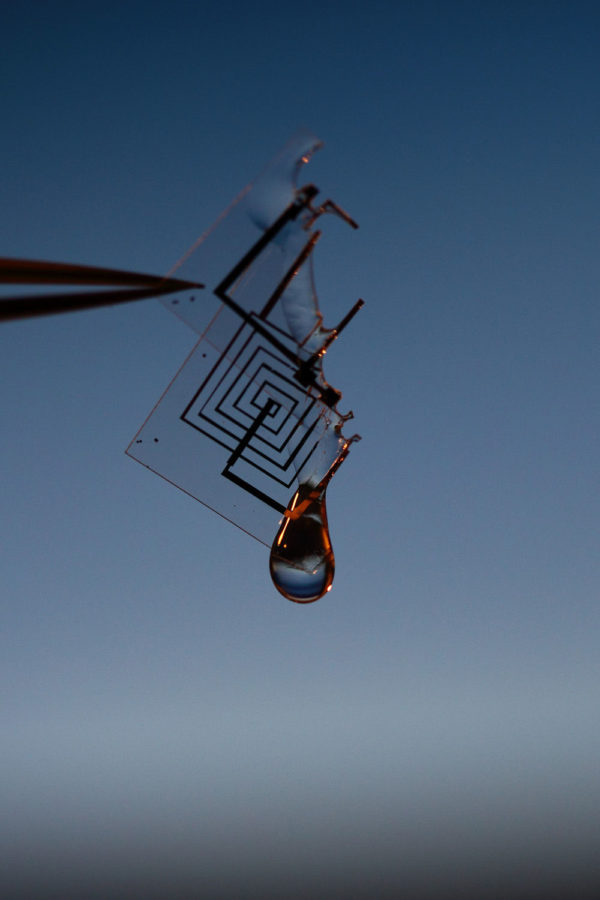University research team develops dissolving wireless antibiotic implant
The circuits involved within the implant itself. These are electronic circuits that are also bioresorbable so they can be implanted into the body at infection sites and won’t have to be removed.
Dec 9, 2014
Last updated on May 10, 2016 at 11:15 p.m.
After spending two years on a research project to combine electronics and biology, a University research team led by John Rogers, Materials Research Lab professor, has completed its development of a wireless antibiotic implant.
The implant, Rogers said, began as a project that encompasses the idea of using electronic circuits as biocompatible devices that will dissolve when placed in biological fluids.
Rogers explained that conventional surgical implants involve devices, such as drug-releasing implants, nerve stimulators and cardiac pacemakers, that must eventually be surgically removed. However, the new device will dissolve after it’s done its job.
“This is different in the sense that we’ve constructed it out of the bioresorbable materials,” Rogers said. “That’s important for an area like programmed drug release because once the drugs are consumed or depleted, then you no longer need or in fact want the device to remain behind.”
Get The Daily Illini in your inbox!
The funding for this device came from the National Science Foundation, which gave grants for the research and the development of the implant. The funding is given based off of criteria that shows the research will be beneficial for some kind of economic or human health. For this particular project, Rogers said the University and Tufts University, who collaborated on the project, each received $100,000 per year.
Rogers said the University research team, composed of graduate and postdoctoral students, focused mostly on the devices and the materials, while the Tufts University researchers focused on animal model demonstrations and the drugs.
SeungKyun Kang, postdoctoral research associate in Engineering, said a benefit of the implant is it could lead to less infections.
“If we use any other device inside the body then we would have to do surgery to take out the device, and that kind of thing can lead to infections,” Kang said. “It’s really beneficial if we can implant a device and leave it inside so it can dissolve.”
In the future, Rogers said, the plan is to delve deeper into the electronics and make it so that the antibacterial drugs are no longer necessary. Roger refers to this as “electroceuticals” rather than “pharmaceuticals” because it will allow circuits to perform the therapy, instead of drugs,
Roger also said that with electronic circuits being used in place of actual drugs, the bacteria would be less likely to get used to the drugs, which is one of the main concerns when it comes to fighting bacterial colonies in infections.
“That type of idea we think could form an interesting and potentially powerful complement to the kinds of things that drugs already do well,” Rogers said. “If you had a purely electronic, non-pharmaceutical approach to deal with that bacteria, that would add some versatility in terms of a way that you could treat the condition.”
In terms of commercial use, Rogers said that it is necessary to first file a patent application, which the University will own. Because this is a biomedical device it would also require FDA approval, which can be a long process.
He also said that while putting the device on the market is a multi-year process, there is a lot of potential with this research and the device itself. The group is “optimistic” and “enthusiastic” for its future, especially because this implant is different from anything out on the market today and could meet many clinical needs.
“We are at the front end of a sequence of many things that would need to happen before a technology like this would be released or brought for commercial use,” Rogers said. “It’s still early days, but I think there is a lot of opportunity here.”
Fatima can be reached at [email protected].






